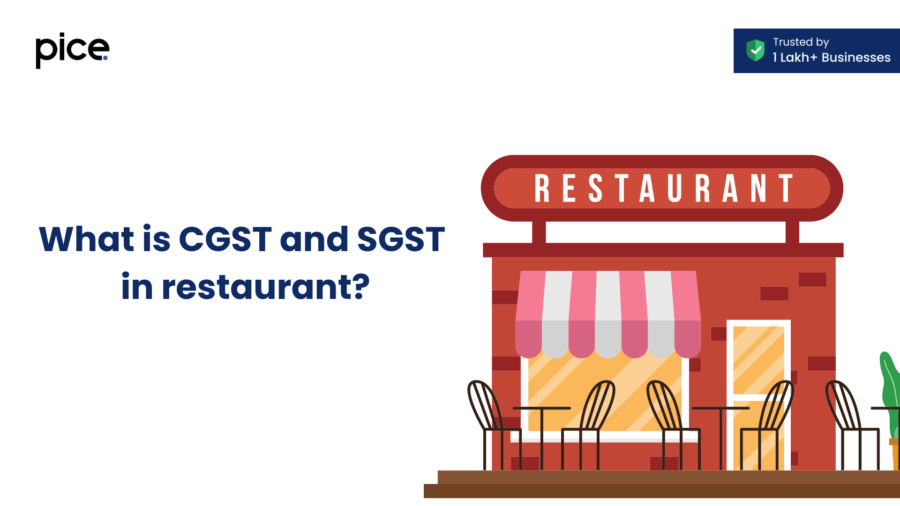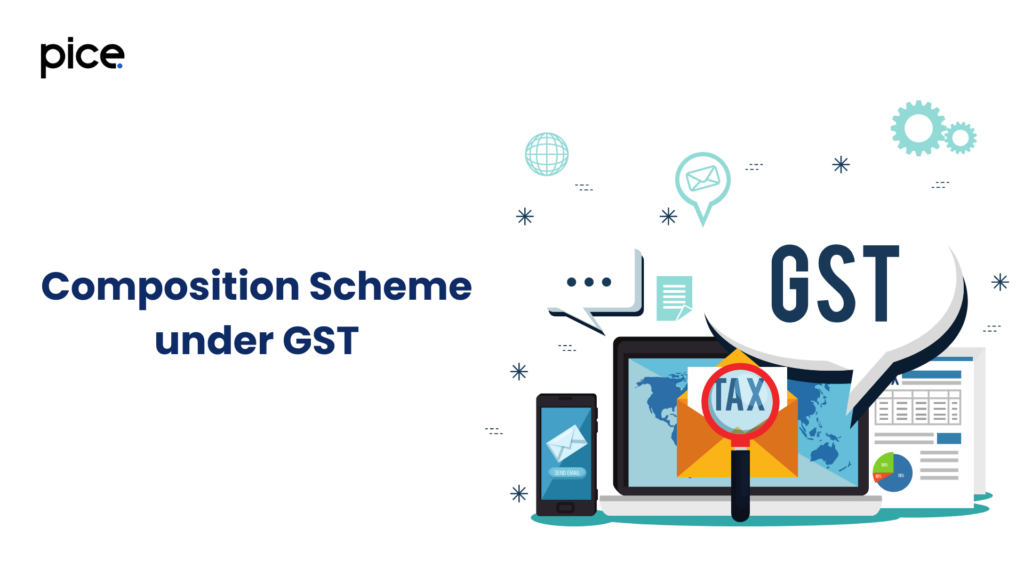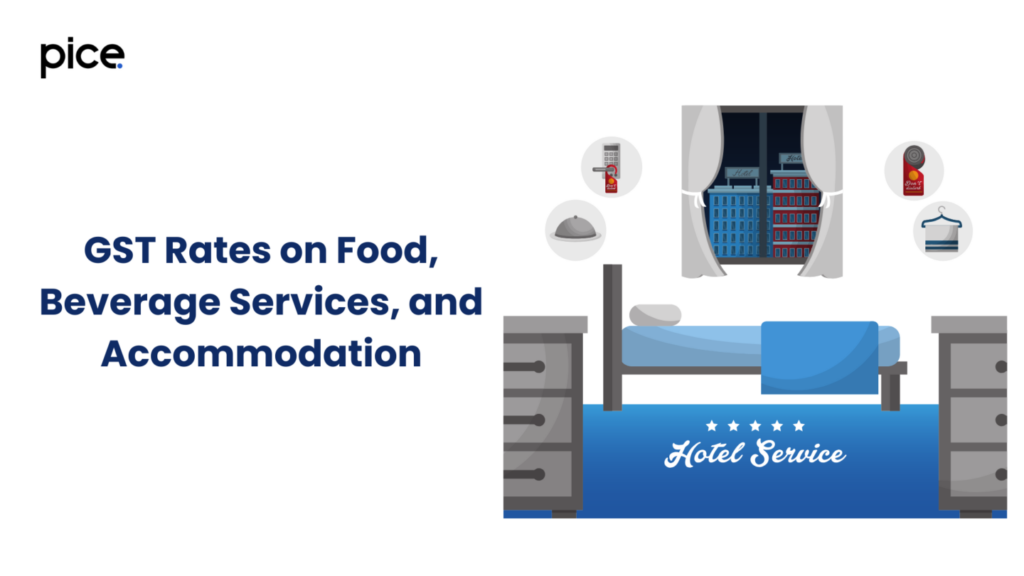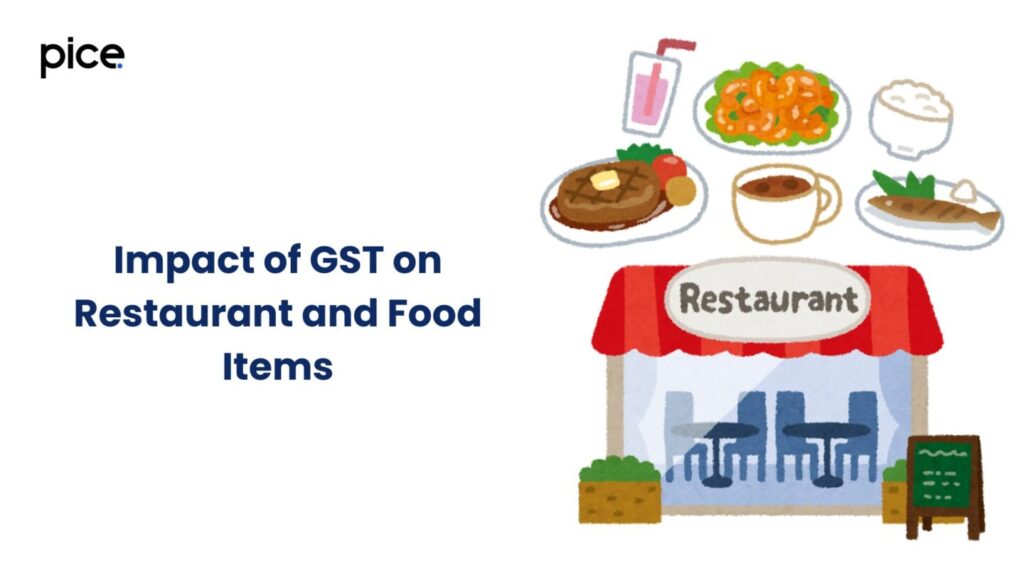What is CGST and SGST in the Restaurant Industry?
- 20 Sep 24
- 7 mins

What is CGST and SGST in the Restaurant Industry?
Key Takeaways
- Simplified Compliance: The Composition Scheme simplifies GST compliance for small businesses, reducing the burden of record-keeping and return filing.
- Dual Tax Structure: For intra-state transactions, both CGST and SGST are levied equally, with CGST going to the central government and SGST to the state government.
- Fixed Tax Rates: Under the Composition Scheme, manufacturers and traders pay 1%, non-alcohol-serving restaurants pay 5%, and other service providers pay 6%.
- No ITC for Composition Dealers: Businesses under the Composition Scheme cannot claim Input Tax Credit (ITC), making it simpler but less beneficial in terms of credit utilization.
- Impact on Restaurant Pricing: GST impacts restaurant pricing differently based on their category (AC/non-AC, alcohol-serving) and their eligibility for the Composition Scheme, affecting overall customer costs and transparency.
Central Goods and Services Tax (CGST) and State Goods and Services Tax (SGST) are two components of GST implemented in India.
- The Central Government levies CGST on intra-state supplies of goods and services. The central government keeps all of the CGST revenue.
- The same intra-state supplies of goods and services are subject to SGST by the state government. The state government keeps all of the SGST revenue.
For an intra-state transaction, both CGST and SGST are levied at the same rate, which is usually split equally between the central and state governments.
Composition Scheme under GST

The Composition Scheme is designed to simplify GST compliance for small taxpayers, easing their record-keeping and return filing burdens.
Eligibility Criteria
- Businesses with an annual turnover up to ₹1.5 crore are eligible.
- For certain special category states, the turnover limit is ₹75 lakh.
Tax Rates
- Manufacturers and Traders: 1%
- Restaurants (not serving alcohol): 5%
- Other Service Providers: 6%
- Businesses under the Composition Scheme pay a fixed rate on their turnover.
- They are not eligible to claim Input Tax Credit (ITC).
- The compliance burden is reduced as businesses need to file returns on a quarterly basis instead of monthly.
Restaurant-Specific Considerations
- AC or Non-AC Restaurants: Restaurants under the Composition Scheme that do not serve alcohol are taxed at 5%.
- AC/Alcohol-Serving Restaurants: These restaurants are not eligible for the Composition Scheme and must adhere to standard GST rates.
- Bills and Dining Context: Bills of restaurants under the Composition Scheme should clearly indicate that they are paying tax at a composition rate, and such businesses cannot issue tax invoices.
- Luxurious or 5-Star Restaurants: Typically, these establishments do not qualify for the Composition Scheme due to higher turnover and are subject to standard GST rates.
Compliance
- Filing returns is done on a quarterly basis, significantly reducing the compliance burden compared to the regular GST scheme.
- The simplified return form, GSTR-4, is used for filing returns under the Composition Scheme.
The Composition Scheme offers small businesses, including certain types of restaurants, a streamlined and less burdensome way to comply with GST regulations while paying taxes at a fixed, lower rate.
Verifying a Restaurant's Composition Levy Scheme Status
To verify if a restaurant is under the Composition Levy Scheme:
- GST Portal: Check the GSTIN of the restaurant on the official GST portal.
- Restaurant Display: Composition dealers must display the notice “Composition taxable person” at their place of business.
- Invoice Details: Composition dealers cannot issue tax invoices. Instead, they issue a bill of supply stating, “Composition taxable person, not eligible to collect tax on supplies.”
GST Appellate Tribunal (GSTAT) in India
The GST Appellate Tribunal (GSTAT) is a quasi-judicial body for resolving disputes under GST. It operates at national and state levels.
- Structure:
- National Bench and Regional Benches at the central level.
- State Benches at the state level.
- Jurisdiction: Hears appeals against the orders passed by the Appellate Authority or the Revisional Authority.
- Purpose: Provides an avenue for taxpayers to appeal decisions and seek justice in tax-related matters.
Original GST Rules for Restaurants
Initially, under GST:
- Non-AC Restaurants: 12% GST without input tax credit.
- AC Restaurants: 18% GST with input tax credit.
- Restaurants inside hotels: 18% GST if room tariff was below ₹7,500 and 28% if room tariff was ₹7,500 or more.
GST Rates on Food, Beverage Services, and Accommodation

- Food and Beverage Services:
- Non-AC restaurants: 5% without ITC.
- AC restaurants: 18% with ITC.
- Outdoor catering: 18% with ITC.
- Accommodation:
- Hotel rooms below ₹1,000 per night: No GST.
- ₹1,000 - ₹2,500 per night: 12% GST.
- ₹2,500 - ₹7,500 per night: 18% GST.
- Above ₹7,500 per night: 28% GST.
Impact of GST on Restaurant and Food Items

Impact on Dining Experience
- Service Charges: Often included in the bill; not a tax but a fee retained by the restaurant.
- GST Charges: Clearly mentioned on bills to ensure transparency.
- Applicable to Customers: Customers bear the final tax burden, reflected in the total bill amount.
- Aware Customer: Increasing customer awareness regarding GST and service charges.
Financial Implications
- Rs 7 Lakh Cr: Revenue target for GST collections highlighting the significance of GST in the economy.
- Rs 5 Lakh: Smaller turnover businesses benefit from the Composition Scheme, reducing tax liability.
Government and Compliance
- Government Department: GST compliance monitored by relevant government authorities.
- Service Tax Transition: Businesses had to transition from service tax and other local taxes to GST, requiring adjustments in billing and accounting systems.
Context and Dining
- Context of Restaurants: GST impacts different types of restaurants uniquely, influencing pricing and customer experience.
- Dining at Restaurants: Changes in tax rates and structures can affect dining costs.
- Food from Restaurants: Takeaway and delivery services also subject to GST, affecting overall pricing.
Implications for Restaurant Owners:
- Simplified tax structure with the Composition Scheme for eligible restaurants.
- Transparent pricing and billing practices due to clear GST rates.
- Potential impact on pricing strategies and customer satisfaction.
Conclusion
GST has streamlined the taxation process for the restaurant industry, providing clarity and uniformity in tax rates while reducing the compliance burden for small businesses through the Composition Scheme. However, it has also necessitated adjustments in pricing and billing practices to accommodate the new tax structure.
💡Learn more about how our Pice app can help you make all your important business payments, like supplier and vendor payments, rent, GST, & utility, from one single dashboard with your credit card. Request a demo now.
 By
By 


















